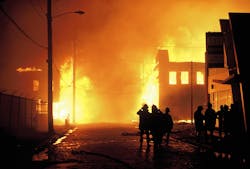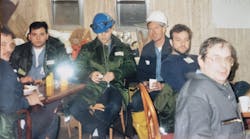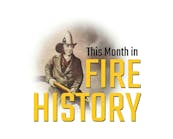October 14 marks the 50th anniversary of the Great Chelsea Fire. The blaze burned 18 acres and destroyed 18 city blocks. This was actually the second huge fire in the area and started just 200 yards away from the Great Chelsea Fire of 1908.
The 1973 fire started in the “Rag Shop” District of the city. High winds and wood-structured buildings led to a fast-moving, quickly spreading blaze. The first alarm rang out at 3:56 p.m. By 6 p.m., the fire had engulfed 18 city blocks. By 9 p.m., 1,200 firefighters from 11 fire departments had responded.
Chelsea Fire Department Chief Herbert Fothergill had to overcome many obstacles, including high winds, low water supply, refueling of equipment, and distribution of mutual aid from departments as far away as New Hampshire. Fothergill eventually took to the air in a helicopter to better assess the nature of the fire and develop a strategy to get it under control.
As the fire was burning, one photographer was in the right place at the right time. His name is David Watson, and this is his story in his own words.
Chasing history
My wife and I were living in Peabody and headed north for a Sunday drive through Gloucester that afternoon. I had my Minolta 35mm camera with me because photography was a hobby of mine. I had one roll of film in the camera and probably used half leaving about 10 exposures left.
As we headed south from Gloucester on our way home, we could see the dense smoke in the distance. You could tell it was a huge fire. I turned on the radio to the news reporting a massive fire in Chelsea that was driven by strong winds. Even the rail service was shutdown. I dropped my wife off at home and headed for the fire.
All the main roads were blocked going into Chelsea, so I walked the railroad tracks to get to the fire. When I finally got there, entire blocks of buildings were burning. Loud cracks and crashes were almost constant among the roar of the flames. There were a few warehouses containing combustibles stored in 55-gallon drums that were exploding like dynamite and sending them 100 feet into the air.
The streets were blocked off to all pedestrian traffic by police barricades and an officer to make sure no one got close. Crowds of people were mesmerized by the sight of everything in flames for blocks. It was just too far away to get some good shots and I wasn’t going to waste what I had left taking pictures from there, so I took a chance and walked down about a half a block and cut through people’s yards and climbed over fences to get closer. I’m not sure where I was going or what street I was on. I remember walking past burned out tenements, one after another and being the only one on the street. Now, I had the camera range I wanted.
I got to an intersection and took a left toward buildings that were burning on both sides of cobblestone street. There was a group of firefighters standing in front of the ITT Technical Institute, which I think was saved. I didn’t know if they were Chelsea firefighters or from another city. There wasn’t much they could do except stand there and watch with no water pressure in the lines. I took my camera out and started shooting. These images are the result.
Aftermath
It was three days before the fire was officially declared fully extinguished.
Th city of Chelsea was declared a federal disaster area.
More than 300 buildings were destroyed, leaving more than 1,100 people homeless and 600 without a job.






